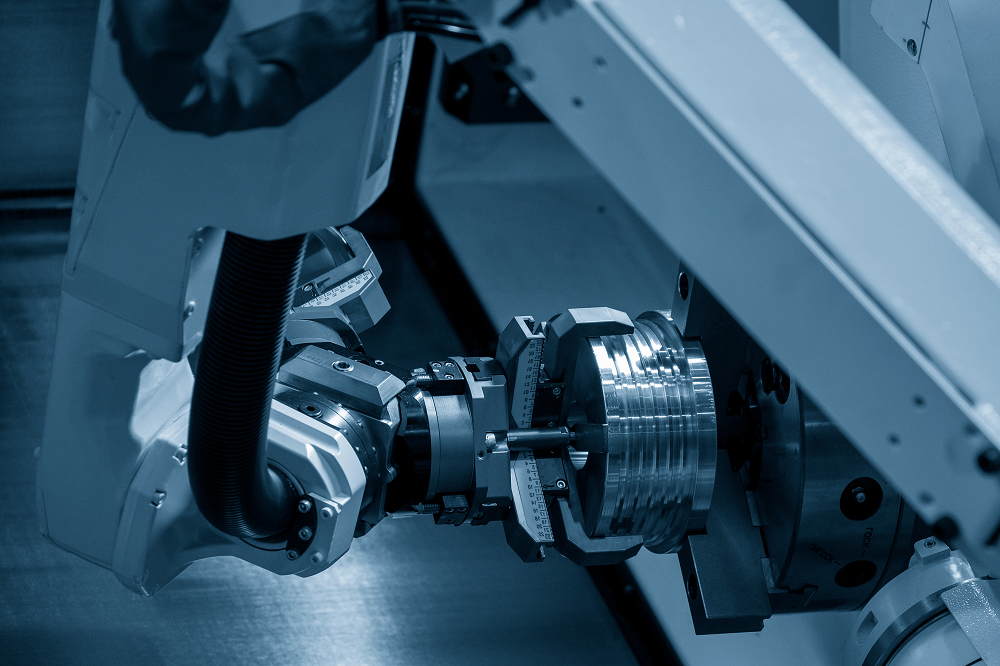For the last decade, manufacturing industries have integrated automation, machine learning, and other business technologies to streamline their operations. However, while the industry has come a long way in the digital transformation journey, the revolution is far from complete. In fact, 80% of manufacturing CEOs are increasing their investment in new technology as a way to mitigate the impact of inflation and the labor shortage.
Digital transformation isn’t just for major manufacturers — small job shops in manufacturing industries can also benefit from implementing new automation solutions. But what technology should you invest in, and how will it improve your operation? Here’s where to begin:
1. Robotics and Automated Machinery
Every machine shop is different, but in most cases, digital transformation starts with implementing some form of production software, robotics, or automated machinery. Potential investment areas include CNC equipment for automated machining operations as well as automated fluid control systems for streamlining cutting fluid management processes.
All these solutions are capable of working unattended and without breaks, enabling increased productivity, requiring less manual input, improving accuracy and precision, while reducing production costs. If your job shop does not require full automation, a class of robots called ‘cobots’ can help employees work more efficiently by assisting them with heavy lifting, cutting operations, and other manual processes.
2. IIOT and Machine Connectivity Software
IIOT, or the industrial internet of things, describes the integration of internet-connected equipment, devices, and sensors into a factory network. The sensors enable real-time data collection of information about individual machine performance, as well as more advanced operations metrics like throughput, cycle time, and even product quality. For example, in automated fluid control systems, users can monitor metrics like concentration, pH, and water hardness in real time, providing constant visibility about fluid conditions.
When this information is routed into machine connectivity software, users can perform advanced analytics of machine performance and operation data to make more informed decisions. Most software also enables users to control individual machines from a central dashboard, so it’s easy to put data insights into action.
IIOT capabilities have the potential to transform every aspect of an operation, depending on how advanced shop managers go with implementation. With this technology, operators can automate cutting fluid management using sensors to detect low levels and automatically top up the sump. They can also use AI to streamline more advanced processes such as inventory management, procurement, and production scheduling to prevent unnecessary downtime. However, while robotics and automated machinery improve physical efficiency, IIOT succeeds in improving process efficiency, streamlining the cognitive labor involved in information processing and decision-making.
3. Shop Management Software
The digital transformation in manufacturing industries extends beyond the production floor and into the back office. Solutions like enterprise resource planning (ERP) and product lifecycle management (PLM) provide more control and insight into procurement, inventory, product data, and customer orders. For an added layer of efficiency, users can integrate shop management software with machine connectivity software for an unprecedented level of visibility into operations and performance.
Similar to the use of machine connectivity software for performance monitoring, managers can use ERP to analyze inventory levels and plan resourcing accordingly. For example, data collected from connected automated systems can help predict how long the current cutting fluid inventory will last and automatically schedule re-orders when supplies are low. PLM platforms provide a central database for shop managers to store all product-related data, including bill of materials, estimated lead times, and other critical information. Advanced data analytics allow users to track order trends, predict future demand, and then optimize production schedules.
Shop owners that invest in digital transformation will see external benefits to their new processes. Beyond greater efficiency and cost savings, new technology allows manufacturers to provide customers with more visibility into their order status, speed up response times, and improve overall communication. In addition, enhanced customer satisfaction helps ensure continued business and higher sales, providing further competitive advantages.
Laying the Foundation for Digital Transformation
Digital transformation won’t happen overnight — it’s a yearslong process that requires careful planning and investment. Always consider ROI, training to manage these technology systems, and the need for automation engineers. Companies must ensure their IT systems are robust enough to handle a digital transformation.
As you transition to automation in your job shop, it’s important not to lose sight of the quality of materials used during production, including cutting fluid. Maximize efficiency by upgrading to advanced coolants designed with the needs of lights-out manufacturing in mind. Upgrading to a low-foam, high-performance coolant like TRIM® MicroSol™ 692XT or TRIM E715 can ensure uninterrupted operation.
Contact Master Fluid Solutions to schedule a site visit and learn more about which fluid solutions can help you automate your operation. You can also request a free trial of any of our TRIM fluids to experience the difference yourself.

